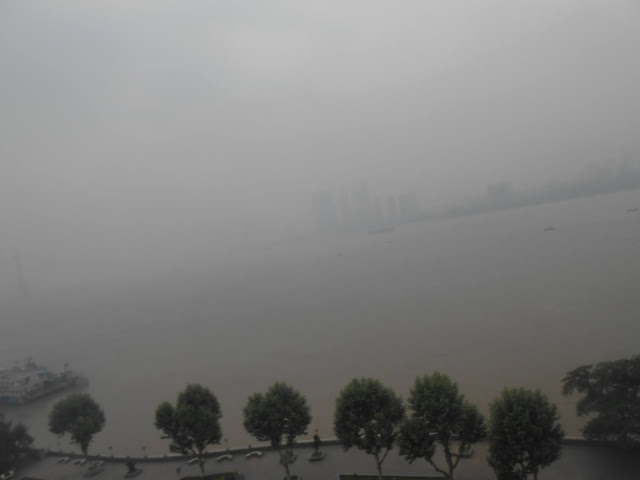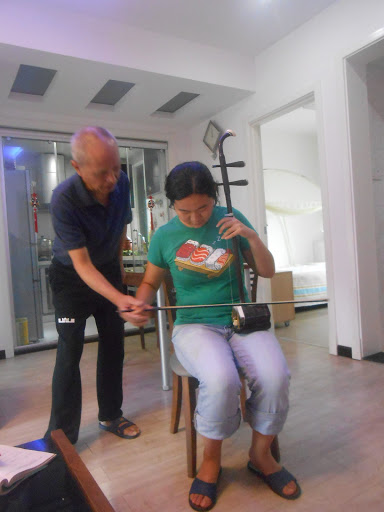This week's Travel Via Food project takes us to Wuhan.
Wuhan is a medium sized city in the industrial heart of China. Though it is prominent within China, it was pretty much unheard of outside China until the Covid-19 outbreak, and now it is famous for the wrong reasons!
My connection with Wuhan is pretty serendipitous. In 2005, I travelled to Tibet for my medical school elective placement. At a random dinner, I sat next to a girl from Wuhan. She had just moved to Lhasa from Beijing and was working as an English - Chinese interpreter for an Ausaid project. As was the case with many foreign projects, both English - Chinese and Chinese - Tibetan interpreters were required as official interactions were in Chinese, but locals were not proficient in Chinese.
Shabai and I became instant friends and spent a few weeks hanging out together in Lhasa. We explored the markets and spent hours lapping up the sunshine in teahouses. We stayed in touch through all the years, later travelling to Nepal together in 2008.
In 2013, I went to Wuhan to visit Shabai and her family. She had worked in Lhasa for a few years, then moved back to Beijing. The pace of big cities in China is pretty overwhelming though, and she decided eventually to move back to Wuhan where life was slower and she could be closer to family.
Wuhan is actually three cities close together (Wuchang, Hankou and Hanyang), cobbled together to be known as Wuhan. It was May, unseasonably warm and humid for that time of the year.
The air pollution had to be seen to be believed. The city was coated under a thick coat of dark grey smog, and visibility was extremely poor. We went to the famous bridge across the Yangtze River, and could barely see out the windows as we climbed up to the bridge level.

Beautiful art deco windows on the ascent

The Yangtze River
All right, one can see that the industrial cities of China are not super picturesque with their tourist attractions. I have some more photos of the grey, but evidently that was not why I visited Wuhan! Instead, we went to check out the street food scene.
Wuhan style Siu Mai - silky wonton wrappers stuffed with glutinuous rice and fatty pork
The infamous Doupi 豆皮, also known as the Three Delicacy Doupi
Doupi is actually the Chinese name for beancurd-skin, a type of dried tofu typically pressed into sheets and rehydrated for soups. This doupi has nothing to do with tofu, but was named after the traditional method of grinding mung bean in the batter. According to locals, this time consuming method is no longer used, modern cooks now favouring plain flour and corn flour for the batter. The "three delicacies" in the doupi refers to pork, shiitake mushrooms and tofu. There are also three layers to the dish - a crepe like surface, sticky rice layer and a savoury filling. The whole lot is fried as one flat cake on both sides then served in squares.
Here you can see the man in an action shot with a giant doupi, ready to be flipped over!
This is perhaps the most famous street snack food in Wuhan - Re Gan Mian 热干面 or Hot Dry noodles. Locals take pride in this dish, as it is the noodle "face of Wuhan" in China. Legend says that a noodle stall had some leftover noodles, which the cook tossed in sesame oil and put aside. When he reheated it the next day and added some condiments (shallots, pickles and chilli), Re Gan Mian was born. Wikipedia says there is even a novel dedicated to Re Gan Mian! As a little piece of modern day history, Shabai's family were in strict lockdown during the first wave of Covid for over 2 months. On the day that the lockdown was lifted in Wuhan, her father went to his favourite Re Gan Mian stall and bought it for the whole family!
I loved how we could have a soy milk or a coke in these retro glass bottles with our noodles!
Wuhan street food... in Newcastle
(all recipes from Shabai's mum and modified to local conditions)
Re Gan Mian 热干面

Cook noodles in boiling water until 80% done.
Drain well and toss with sesame oil.
While the noodles are cooking, place 1 tbsp of sesame paste per person into a bowl
Add a splash of warm water and mix vigorously with chopsticks. Add some more and mix until the paste has loosened and has a runny consistency
Mix the noodles in the sesame paste till well coated
Top with finely chopped spring onions, pickles, chilli, a splash of light soy and rice wine vinegar if you like it
Slurp the whole bowl up!
PS. I will definitely try this again with more traditional alkaline thin noodles (like Japanese ramen noodles)
Three - delicacy Doupi 三鲜豆皮

Incidentally this became vegan since my vegan friend dropped by as I was about to start cooking! The three components are:
1. Sticky rice
Soak 1 cup of sticky rice for at least 2 hours, then drain
Steam for 30min until cooked and fragrant, spray the tops with water if too hard (Shabai's mum said I may need to do this, but I did not)
2. Filling
Finely dice spring onion, shiitake mushrooms, tofu and red capsicum
Fry the spring onions in some oil along with ginger (fresh or paste)
Add mushrooms and tofu, a splash of light soy and some pepper
Top up with shiitake broth or veg stock until almost submerged and cook until a reduced sauce forms, approx 10 min
Add red capsicum and cook for one more min, then set aside to cool
3. Crepe
2 tbsp maize flour + 2 tbsp plain flour
Add enough water to form a runny pancake batter consistency, must pour easily
Final assembly:
Cook crepe batter in a non stick pan till set and easily sliding around
(Traditionally a beaten egg is also spread over the crepe as it cooks)
Turn off the heat to avoid burning your fingers
Spread sticky rice over the surface of the crepe
Spread filling on top of the sticky rice
Turn the heat back on and cook for ~2 min till warmed through
Flip the whole thing over to brown the other side if you dare (it may disintegrate)... we just took it out of the pan and ate it! You can tuck the edges of the pancake in to look neat.
I dedicate this post to Shabai - one day when Covid is finished, I want to go back to Wuhan to eat all these delicacies again!







Thank you for the wonderful portrait of a person from a place that seems more mythical than real to many of us. The foods look wonderful.
ReplyDeletebe well...mae at maefood.blogspot.com